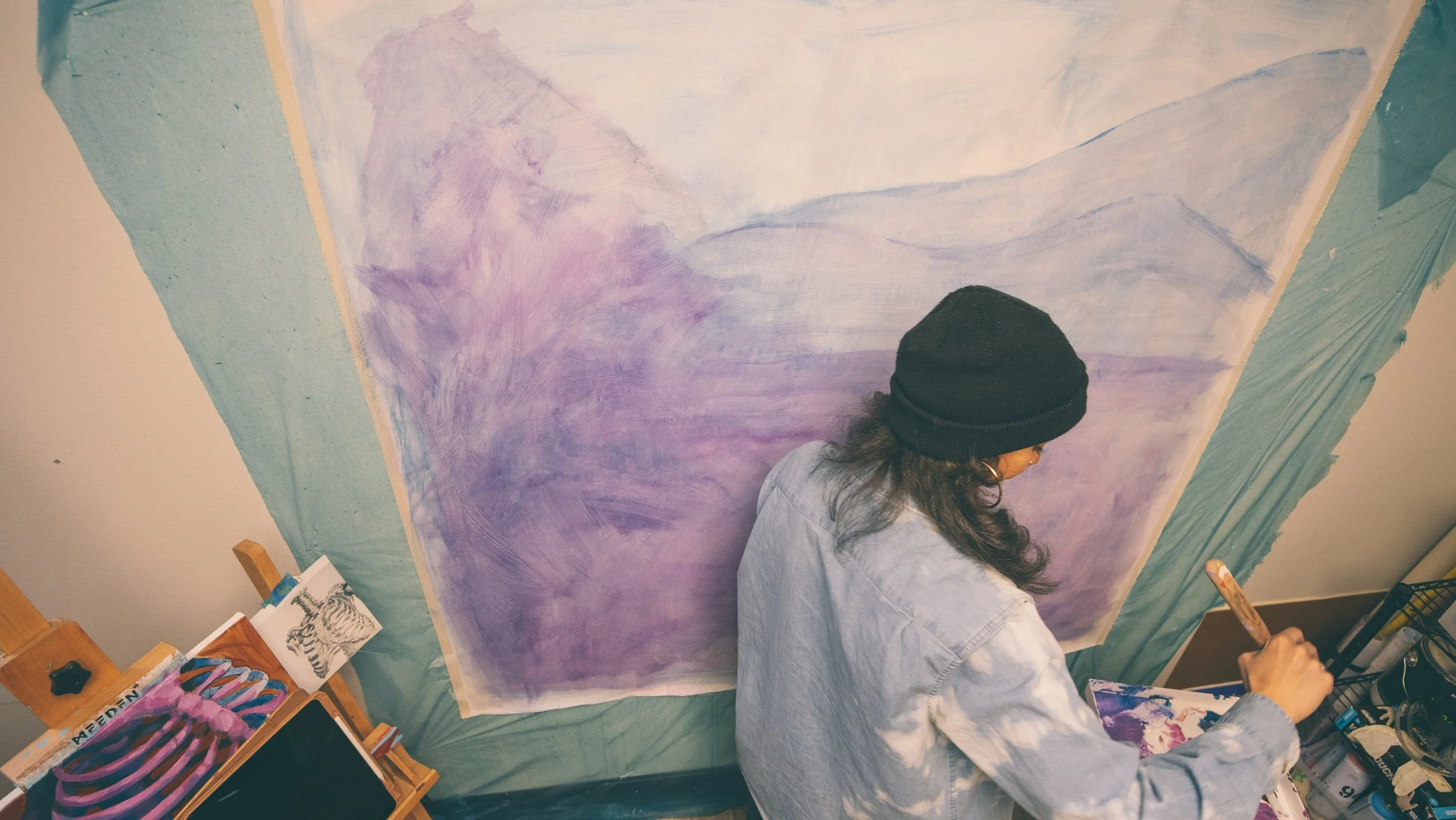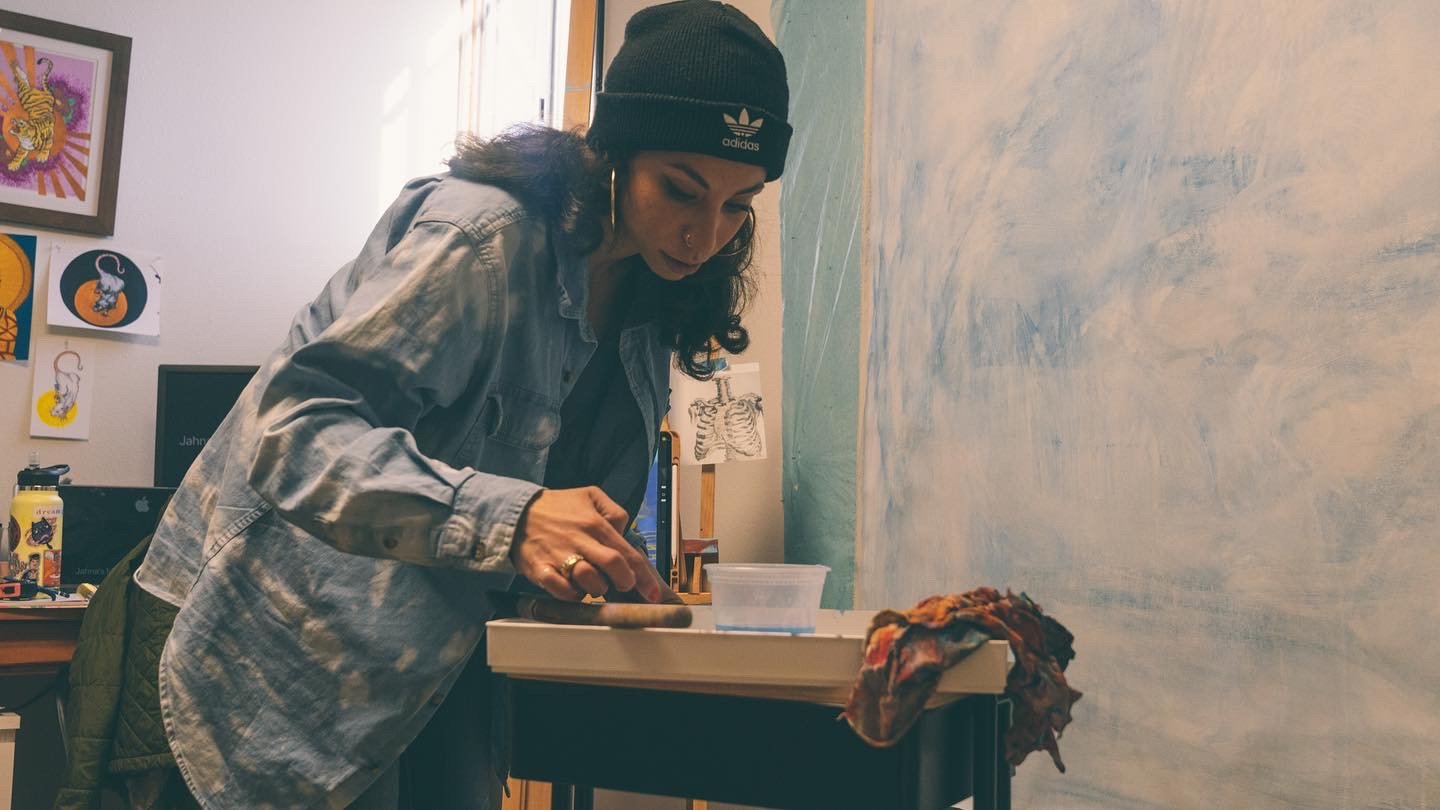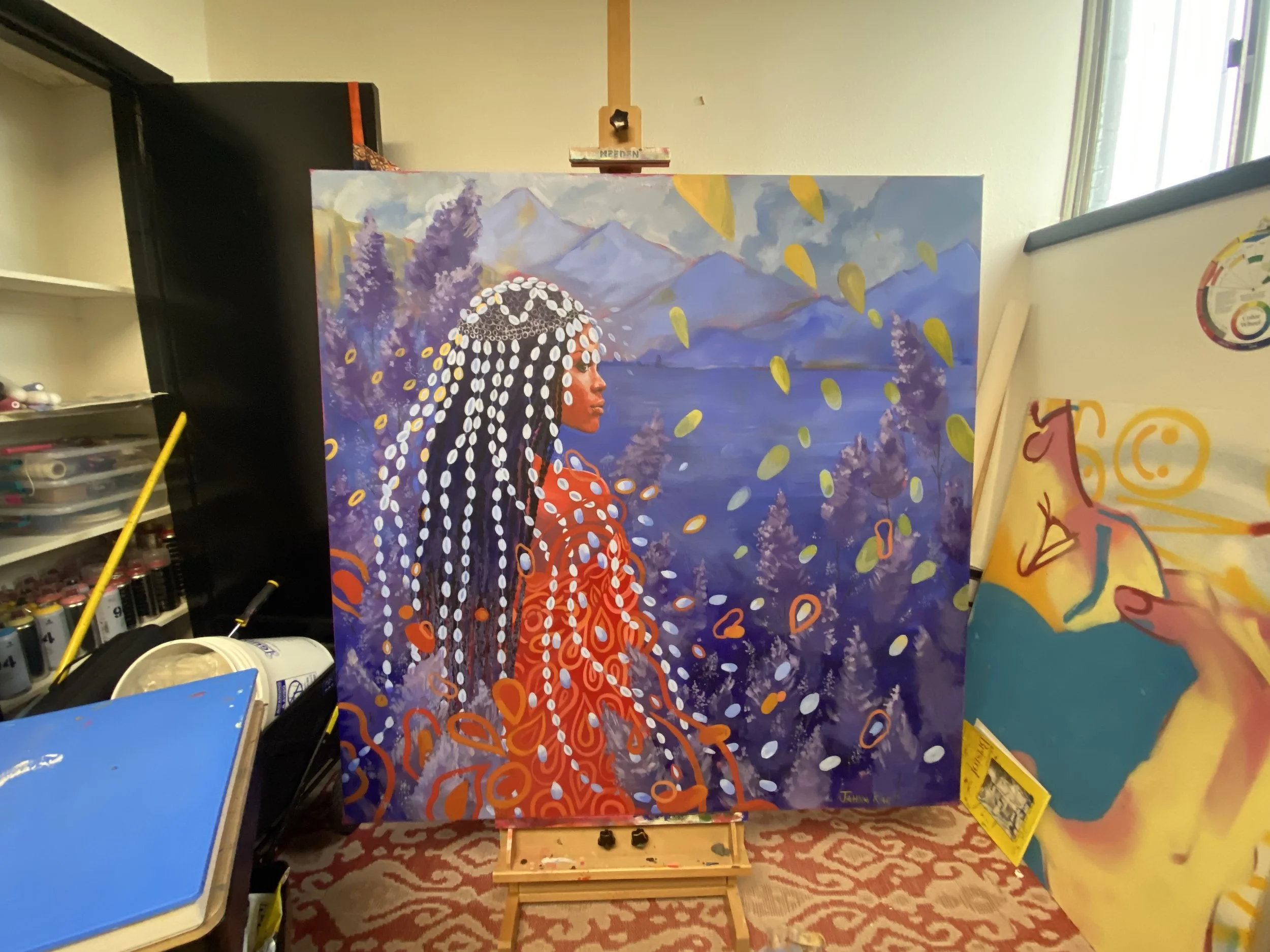“Holy Days” is a painting dedicated to both of my grandmothers — the one who helped raise me, and the one who never let me close enough to truly know her.
When I think of both of them, the color purple always comes to mind. Purple is the union of red and blue — warmth and coolness, passion and calm. It’s a merging of opposites. And not to say one is better than the other, but that’s exactly how my grandmothers could be described; opposites.
My maternal grandmother, Gramma Jane, had towering lilac bushes along her patio — or at least they seemed enormous to my child eyes back then. Those lilacs weren’t just part of the scenery; they were part of my imagination. They became hiding places for games, make-believe kingdoms, and secret adventures. I can still smell their sweetness — the kind that filled her yard every late spring when everything buzzed with color and life.
Because of those memories, purple lilacs remain one of my favorite flowers. They remind me of warmth, safety, and unconditional love — all things that Gramma Jane embodies. She is like the red cloak in my painting: radiant, loving, and full of life. Her home, and her presence, are the essence of comfort. There was never a doubt in my mind that she loves me deeply.
The early stages of painting Holy Days in my studio in Denver CO
And then there was Grammy Girl, my paternal grandmother—the Jamaican half of my heritage. I grew up proud of that side of my roots. We ate the patties, listened to Marley, waved the flag. But there was still so much about my Black heritage that I didn’t fully know or understand—partly because of the distance from my father’s family, and partly because of more complicated reasons that adulthood would later reveal. Some pieces of who I am have always felt like a mystery.
When I think of Grammy Girl, purple comes back again — but in a completely different way. Not flowers this time, but her head-to-toe purple outfits: I’m talking purple hat, blouse, sweater, pants and even shoes. Her purple bedroom with purple bedding and her kitchen—of course— purple. It was her favorite color. I think that was the first thing I really learned about her. My purple-loving, 5-foot-tall Jamaican immigrant grandmother was otherwise enigmatic to me in many ways much like the parts of my Black heritage I was still trying to understand.
She was tiny but she carried a strength and intensity that filled the room. Despite our limited connection, I loved her. I loved her outfits and her accent. I loved when she giggled and her entire little body would bounce. I loved that despite her short legs, she was still up for an adventure with us when we rode the bus and the subway from Jamaica, Queens into Manhattan. I even loved the chicken, black beans and rice she made for us every. single. time. we saw her.
But she was quiet. Not a storyteller like Gramma Jane. I often found myself reaching for things to say, hoping to spark a conversation or a real glimpse into her world. There was a guardedness about her that made me wonder, even as a child, whether she really liked me.
Color as Memory and Meaning
The colors in Holy Days speak to the duality of my grandmothers — how sadness, love, joy, longing, connection, and disconnection can coexist. It’s the “yes, and…” of life — where multiple truths live side by side, shaping who we become and what we pass on.
Gramma Jane’s love is abundant and affirming. She gives me the kind of grandmotherly warmth most people only dream of. But even her love couldn’t fill the space left by Grammy Girl’s distance. She could teach me Italian traditions and values, but she couldn’t show me what it meant to navigate the world as a half-Black woman in America.
I loved Grammy Girl deeply too, but I resented that we never built a deeper bond — that our relationship never grew beyond her birthday calls and holiday visits. I cannot recall her even asking me questions about my life over the years. When I was 25, for complex reasons, our contact ended completely. I thought maybe someday she’d reach out though— a letter, a phone call, something. But that day never came. She passed away this year at 100 years old. All I have left of her are a pair of earrings and a small, worn photograph of her and my Grandpa Ozzie.
She came to me once in a dream after her passing—dressed head to toe in her signature purple, smiling. In that dream, she hugged me and told me she loved me…and despite the great physical and emotional distance between her and I during her life, that dream was a vision I chose to believe as real.
Legacy and Becoming
The meaning behind this painting has changed for me over the years and since Grammy’s death. But I will say that the one thing that remains the same since the first paint stroke: grandmothers leave behind a spiritual imprint that lives through us.
Their stories — told and untold — weave into who we are. Through them, I’ve learned that love can be loud or quiet, open or guarded, present or distant. Both are legacies.
It’s because of my grandmothers — their contrasts, their strengths, their imperfections — that I understand what it means to carry the role of matriarch forward. And now, as a mother myself looking towards the future, I take that responsibility seriously.
Holy Days in its new home in Port St. Lucy FL





